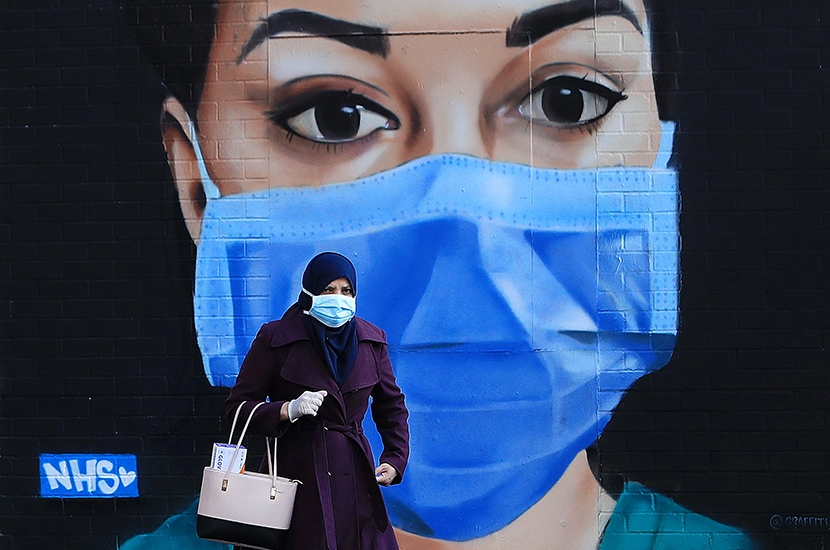In 1846 Vienna, as across much of the world, a relatively new disease called puerperal (or ‘childbed’) fever had reached epidemic proportions in the local maternity hospital. Death rates of mothers and babies after childbirth were averaging 10 per cent, sometimes twice that. Across the western world millions were dying, the rate reaching 40 per cent in some hospitals. A Hungarian doctor in Vienna’s hospital, Dr Ignaz Semmelweis, began to wonder whether the problem might be something on the hands of doctors who’d been conducting post mortem examinations on the fever’s victims. He suggested handwashing with a chlorine solution. It worked. Deaths plummeted.
But Vienna’s medical community would have none of it, content with the well-established belief in foul winds as spreaders of disease: ‘miasma’ theory. Acceptance of ‘germ’ theory was some way off — and nor did Semmelweis quite reach it himself. He simply observed that handwashing worked. The medical authorities closed windows to keep ‘bad air’ out, and they treated Semmelweis the same way. True to form, then as now, the Viennese equivalent of the British Medical Association, outraged at any suggestion that their profession could be part of any problem, made him an outcast. Sacked, ridiculed and shunned, Semmelweis died later in a mental asylum.
The Hungarian doctor had believed in experiment and data collection. He’d worked on two maternity wards, one staffed by midwives and one by doctors. Deaths on the doctors’ ward exceeded those on the midwives’ side by a factor of five. Conditions were otherwise the same.

Why the disparity? Ignoring ingrained beliefs, Semmelweis had started physical trials, changing one condition at a time: birth position, for instance, even the priest’s bell. But a pathologist’s death from puerperal fever had given him a helpful posthumous nudge towards the autopsy room, so he’d tried a new variation, this time using the midwives (uninvolved in autopsies) as his control. Doctors were ordered to hand-wash, even though Semmelweis had not understood why this might work.
Eureka. That’s the beauty of the scientific method. It’s not rocket science. I’ve been thinking often of the poor doctor as the issue of mask-wearing has crowded on to our news pages. Debates about masks have raged in recent weeks; arguments about bars and restaurants, shops, gyms and beauty parlours. Everyone, it seems, (including government ministers at odds with each other) has his or her opinion about the efficacy or otherwise of a face covering in hindering the transmission of the Covid-19 virus. Opinions differ.
Nobody sane disputes the scientific method. So why are we wasting time talking about face masks?
Opinions? Why should anyone have an ‘opinion’ on whether face masks help? This is the 21st century. Nobody sane now disputes the scientific method. So why are we wasting time with opinions about face masks when it must be relatively straightforward to establish by experiment whether a fabric covering to the nose and mouth hinders transmission? Why not get infected people (a) wearing masks, and (b) without masks to cough, from a range of distances, in the direction of un-infected people not wearing masks? Then do the same, except with the uninfected wearing masks. Your uninfected guinea pigs would of course have to be volunteers, and young and fit and not, therefore, at any significant serious risk from the virus. Such experiments, known as ‘human challenge studies’, are routinely conducted in the testing of flu vaccines, and a healthy young human is at no more risk from Covid-19 than from flu. So what’s the problem?
I’ve been making a few enquiries with those knowledgeable in the field of human challenge studies. And the further in you wade, the more they explain, and the more you listen, the more the weeds begin to tangle your ankles. Apparently it’s all about ‘ethics’. For human research we are governed by the General Medical Council, European Law until the end of the year, and the European Convention on Human Rights. In Britain we also have something called the Medicines and Healthcare Products Regulatory Agency. Any suggested trial involving a live virus and human volunteers would at present be ‘not on’, I was told. ‘Things tend to go a bit slowly.’
Such Covid-related trials as are being conducted (beyond vaccine research) relate mostly to possible treatments, where human guinea pigs would only be considered as subjects if they were already very seriously ill and had (as it were) little to lose. But as for using healthy humans for transmission trials: ‘You run straight into big trouble here.’
Listening, I had to keep holding on to the obvious common sense of trying face masks out to see if they work. So what was getting in the way? My conclusion is that although scientists and their ethics committees believe themselves to be making decisions on a dispassionate basis, they have been unconsciously swayed by a miasma of voodoo surrounding this particular virus. Because it’s killing hundreds of thousands worldwide and threatening to overwhelm health provision, the virus’s very name triggers (understandably) a kind of panic in which words like ‘pandemic’, ‘lethal’ and ‘death counts’ swirl around. In this state of mind, we overlook the fact that the risks this virus poses are pretty neatly targeted on an identifiable minority of our population.
By not subjecting face covering to the experimental method, we have in fact been conducting a human challenge study — but our guinea pigs never volunteered. It is we, the whole British population, who have been used for the past four months to test the hypothesis that face masks don’t work. Now we’re to be used to test the hypothesis that they do. Sadly, however, there is no ‘control’ population against which to compare results. This is neither good ethics, nor good science.
An earlier version of this article said Covid-19 was killing ‘millions’. While projections for Covid deaths range up to several million, there were around 650,000 at the time of publication – which Lionel Shriver pointed out in a later column.







Comments